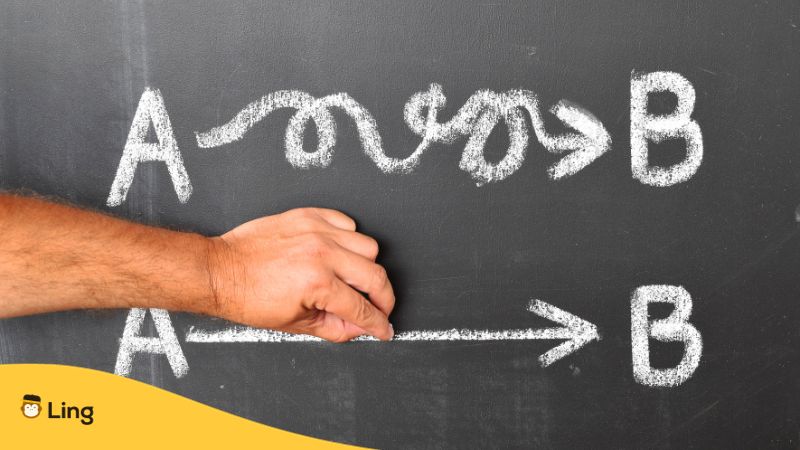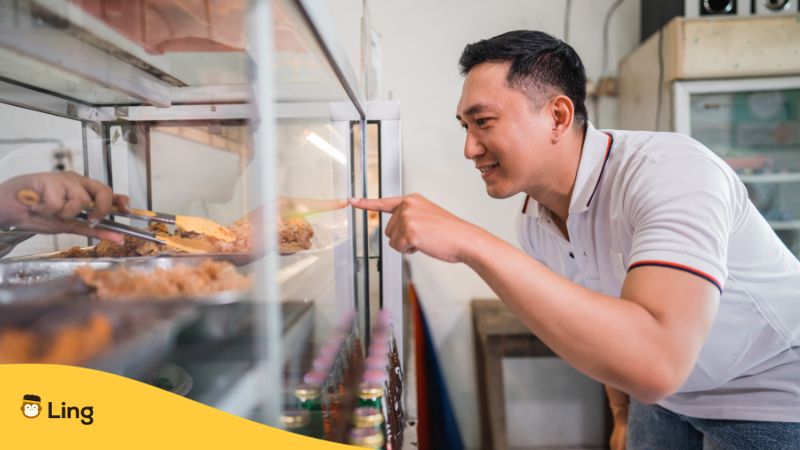Strap in because we’re about to delve deep into the wonderful world of Korean demonstrative pronouns! Do you think it will be too difficult? Don’t worry! Just think of these words as the fiery gochujang sauce to your hearty bowl of bibimbap in the grand feast of Korean language learning.
These bad boys are the essential linguistic gadgets that shine the spotlight directly (pun totally intended!) on the subject of your chatter. So, let’s roll up our sleeves and add a dash of spice to your Korean conversational collection, shall we? These nifty pronouns are your golden ticket to chatting like a true Seoul local. Ready? Let’s start!
There I was, a wide-eyed K-drama aficionado in 2018, taking my first steps in the electrifying city of Seoul. As I wandered through a bustling local market, my senses were assaulted by the riot of colors from the traditional hanbok garments and the mouthwatering scent of freshly rolled gimbap. Fuelled by a burning desire to show off my growing Korean skills, I confidently pointed towards a tempting tteokbokki (spicy rice cake) stall and declared, “나는 그것을 원한다” or “naneun geugeos-eul wonhanda” (I want that). The vendor looked at me, eyes wide and utterly befuddled, before starting to laugh at me.
Turns out, I’d made up a phrase more suited for an intense philosophical discourse or a flowery poem, rather than a casual request for spicy rice cakes! At that moment, an epiphany washed over me – choosing the right demonstrative pronouns is not just important, it’s absolutely critical for those casual chinwags. It’s like mastering the art of wielding chopsticks – get it wrong, and you might just find yourself fumbling your kimchi! So, listen to my advice – pick your pronouns with care, and you’ll become the star of all local’s anecdotes!

What Is Demonstrative Pronouns In Korean?
Alright, let’s take a moment to delve into the intriguing universe of Korean grammar, where demonstrative pronouns strut around like they own the place, known by their official title of “지시 대명사” or “jishi daemyeongsa.” Now, don’t go running for the hills at the sound of that linguistic mountain!
These jishi daemyeongsa are like the rock stars of the sentence world, strutting onto the stage to point out specific things or people, all while crooning, “Hey, check this out!” or “This one, pretty please!” They’re the ones that transform the often-vague ‘it,’ ‘this,’ and ‘that’ into the crystal clear stars of the show.
Now, let’s just imagine, you’re at a cozy café, and you’re craving that heavenly Bingsu (shaved ice dessert). Without our trusty jishi daemyeongsa, you might find yourself wildly gesturing and miming like a mime artist having a bad day while the server just gives you the old shoulder shrug. So, let’s give a big, warm welcome to these unsung heroes of our sentences. Because without them, you might end up with a steaming bowl of spicy fish stew instead of your much-anticipated icy treat. And believe me, in the world of culinary surprises, that’s one mix-up you definitely want to avoid!

Korean Demonstrative Pronouns
Alright now, let’s get acquainted with the rock star lineup of Korean demonstrative pronouns! These linguistic maestros really know how to bring the house down in any conversation.
Basic Demonstrative Pronouns
First on the stage, we have our subject/object pronoun trio: 이거 (igeo), 그거 (geugeo), and 저거 (jeogeo). They’re your go-to guys when you want to point out objects, like that scrumptious bowl of spicy bibimbap that’s calling your name.
So, let’s break it down:
- 이거 (igeo) – This: This little number is perfect for talking about something that’s right up in your personal bubble. Use it when what you’re referring to is close to you, the speaker. Example in action: “이거 맛있다” (igeo mas-issda), which means “This is delicious!”
- 그거 (geugeo) – That: This guy’s your wingman for referring to something that’s playing hard to get, something that’s not close to you or your listener. Think of it as the Korean equivalent of ‘that’ in sentences like “그거 먹을래요?” (geugeo meog-eullaeyo?), which translates to “Do you want to eat that?”
- 저거 (jeogeo) – That: And last but not least, we have 저거 (jeogeo), the one you call on when what you’re talking about is playing super hard to get, like it’s on the other side of the room (or even farther!). It’s perfect for when you want to say, “Look at that over there!” like “저거 보세요!” (jeogeo boseyo).
For Locations
Now, let’s meet the pros that’ll have you navigating locations like a local. Introducing 여기 (yeogi), 거기 (geogi), and 저기 (jeogi) – your ultimate Korean navigational team. Next time you find yourself wandering the bustling streets of Seoul in search of that elusive hole-in-the-wall kimchi joint, these are the guys you’ll want in your corner.
- 여기 (yeogi) – Here: Think of this one as your personal tour guide. Use it to talk about a spot that’s close to where you are, much like how we use “here” in English. So, if you’ve already made it to the kimchi place, and you want your friend to join you, just say, “여기 와요!” (yeogi wayo!), translating to “Come here!”
- 거기 (geogi) – There: This one’s your wingman for places near your listener, but not necessarily near you. It’s similar to our good old “there” in English. For example, if your friend is chilling near a shop, and you want them to wait for you there, hit them with a “거기 기다려요!” (geogi gidalyeoyo!), which means “Wait there!”
- 저기 (jeogi) Over there: Last but certainly not least, we have 저기 (jeogi). This is your guy for talking about places that are far from both you and your listener, akin to “over there” in English. So, if you’re trying to point out a landmark in the distance, simply say, “저기 보세요” (jeogi boseyo), translating to “Look over there!”
For People
Last, but certainly not least, let’s delve into the realm of people pronouns. Meet 이분 (ibun), 그분 (geubun), and 저분 (jeobun) – your new linguistic companions for referencing ‘this person’ or ‘that person’. These will be your go-to terms when narrating tales of your encounters, like that time you met a kind 아줌마 (ajumma) at the market.
- 이분 (ibun): Picture this one as the ‘this person’ in your story. If you’re introducing your buddy standing right beside you, you’d say, “이분은 제 친구입니다” (ibun-eun je chingu-ibnida), which translates to “This person is my friend.”
- 그분 (geubun): Think of this as the ‘that person’ in your narrative. It’s the term you’d use when your friend is closer to the person you’re referring to than you are. For instance, if your friend is standing near someone and you want to inquire about them, you’d ask, “그분은 누구인가요?” (geubun-eun nugu-ingayo?), which means “Who is that person?”
- 저분 (jeobun): Now, this one’s your ‘that person over there’. Use it when the person you’re talking about is far from both you and your listener. If you’re trying to point out someone in the distance, you might say, “저분은 누구세요?” (jeobun-eun nuguseyo?), which translates to “Who is that person over there?”
It’s important to know that these three terms are mostly used in formal and polite conversations. So in more casual context, you can use the following words instead: 이사람 (i-saram) – ‘this person,’, 그사람 (geu-saram) – ‘that person’, 저사람 (jeo-saram) – ‘that person over there.’
Just a gentle reminder – in the realm of Korean grammar, these pronouns are like your secret weapon, the golden ticket that unlocks a world of linguistic possibilities. They infuse your sentences with authenticity, making you sound like a true local. So, brave language warriors, gear up and put these demonstrative pronouns to good use!
Learn Korean With Ling
And there you have it, friends! You’ve now mastered the art of referring to ‘this person’ and ‘that person’ in Korean. But remember, your journey doesn’t end here. The Korean language is a vast ocean of thrilling expressions and subtle nuances, all waiting to be explored by you.
Wondering where to go next? Don’t worry; we’ve got you covered!
Introducing the Ling app – your ultimate destination for all things Korean. Packed with insightful lessons and hands-on exercises, Ling is designed to transform you into a Korean-speaking whiz in no time. So, don’t wait! Head over to the App Store or Play Store, download the Ling app, and continue your adventure in Korean linguistics. Remember, when it comes to language learning, Ling reigns supreme. Let’s tackle Hanguk-eo!



































































